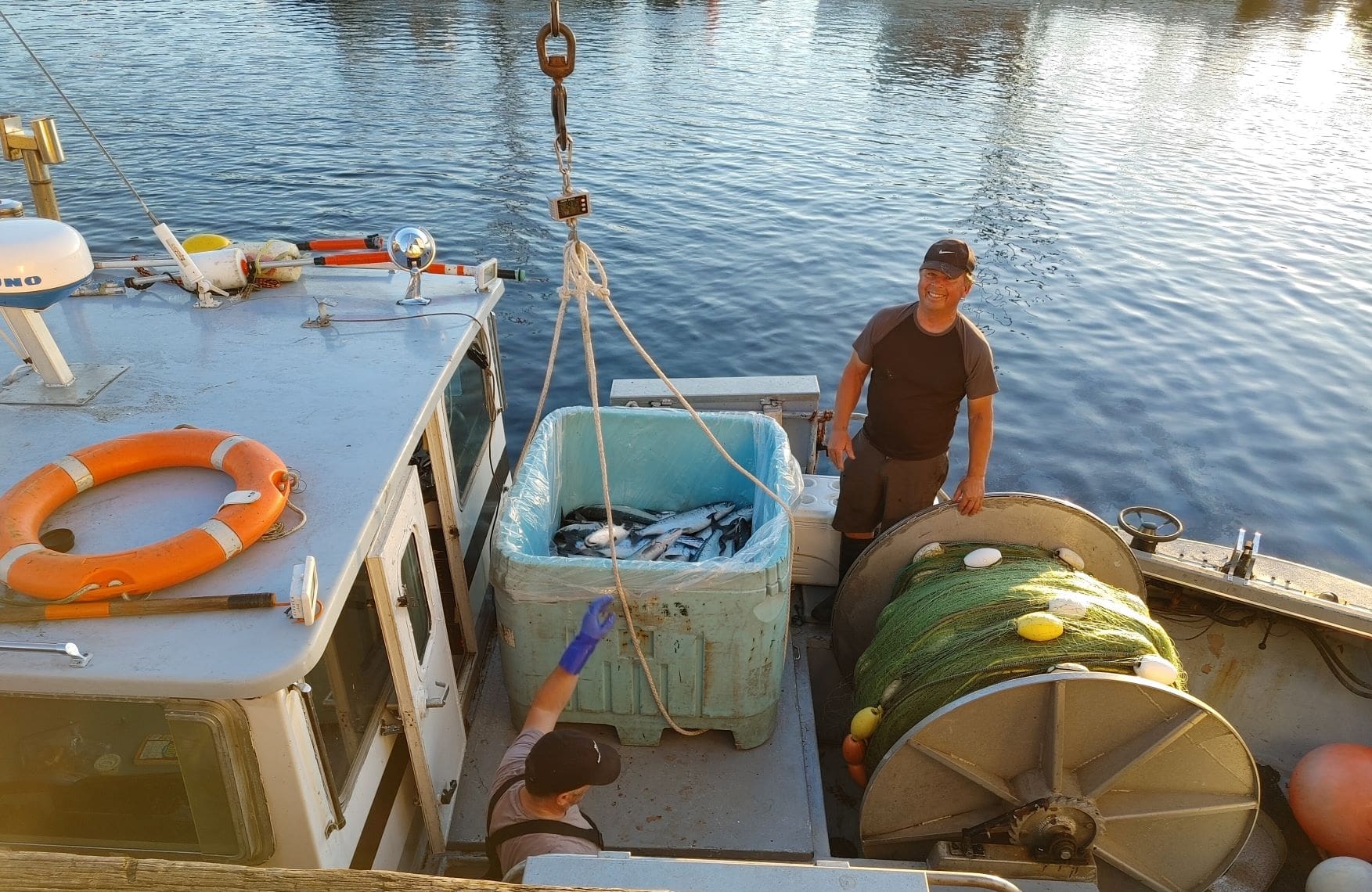Salmon Traceability With Skipper Otto
NewsWe take pride in our traceability! In being able to tell you exactly who caught each piece of fish, where, when, and how.

We take pride in our traceability! In being able to tell you exactly who caught each piece of fish, where, when, and how. And the nature of salmon gillnetting makes this an extra special challenge. But Skipper Otto is always up for the challenge to reinvent systems for justice and equity! So, I wanted to share with you a bit about how this works with salmon gillnetters and how you can be confident that your Skipper Otto salmon is the most hyper-traceable salmon on the coast!
Gillnetting for salmon is very different from a lot of the other BC fisheries. For conservation reasons, it is a “derby” fishery rather than a quota fishery. This means that instead of just being able to go out and fish for a set amount of fish whenever they want, harvesters have to wait for fishing “openings” to be announced. Conservation and Protection officers monitor returning salmon very closely during the spawning season. When enough salmon have made it up the rivers to spawn to ensure that future runs will be strong and abundant, then fishing opportunities are granted. Often, 24 hours of fishing is announced and then fishing is closed again until the following week. This allows DFO to assess how many fish are being caught and monitor how many spawners continue to get up the river.
For example this year, we had 17 fishers among the one hundred or so boats at the first sockeye gillnet opening of the year in Barkley Sound. Fishing families staked out their favourite spots so that the minute fishing opened, they rolled their nets out in the water and got to work. Sometimes they hit it big, and each catch a hundred or more fish. Or sometimes they “scratch away” at it and catch a few dozen fish each. It’s a gamble!
When those 17 boats came into port at the end of the opening, we were there to greet them! We took our turns at the busy offloading winch and we weighed and counted and packed those silver-bright fish into totes of shaved ice to transport them back to our processing plant in Richmond where they were immediately cut, flash frozen, and made ready to pack into your orders.
As you can imagine, offloading the catch of 17 fishers quickly on a busy pier is challenging and extra challenges are introduced at multiple points if we try to strictly keep the fish separated by boat. It can be done at the point of offload but it requires adding a lot of extra plastic and this is something we just can’t feel good about. Instead, we pack some of Rick’s 200 fish in a tote with Dave’s 56 fish and Tinh’s 108 fish and a bunch of ice. Mixing at the point of offload means we’re not using huge plastic liners to separate batches and we are also not complicating things for the processor who is trying to cut the fish quickly to preserve freshness. Instead, when we fillet them, we’ll put Rick and Dave and Tinh’s faces on the labels in the same ratio of fish as they caught. We aim to be transparent about this by having the label say “Tinh caught his share of these fish” instead of “This fish caught by Tinh” which is what you’ll see on all the fish caught in quota fisheries where seafood can be frozen at sea, collected in larger batches, and offloaded one harvester at a time. You still know exactly when, where, and how your fish was caught, and you know it was caught by one of 17 independent fishers. Our assumption is that our members would rather we didn’t individually plastic wrap each batch and slow down our processing in these gillnet situations just so that we can tell you whether it was Rick, Dave, or Tinh who caught this specific fish that day.
If you’ve read this far, thank you for being willing to dig deep into understanding how we manage traceability here at Skipper Otto! We’re reinventing the seafood system for justice and equity and we’re so happy to be on this journey of co-creation with all of you! We always welcome your feedback and suggestions. We hope you enjoy the salmon as much as we do! If you want to support or buy Canadian sustainable seafood, join our membership!
